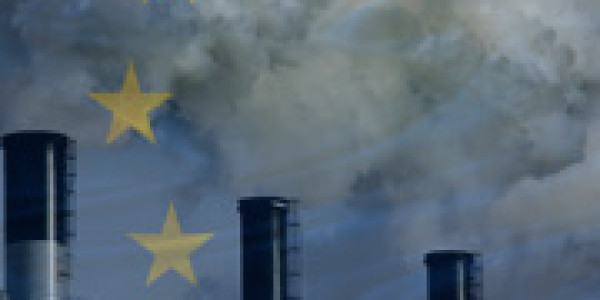Joanne O’Dea, Science|Business MEPs say putting a price on pollution will encourage innovation in clean technologies and buy time for much-needed reform Turning around a vote from April, the European Parliament has voted to boost the price of carbon by taking 900 million permits off the table in an attempt to rescue the EU’s flailing emissions trading system (ETS). A surplus of approximately 2 billion allowances in the system, the result of oversupply and a fall in industrial activity, has caused the price of carbon to plummet from €29 per tonne in July 2008 to a record low of €2.63 after April’s “no” vote. With such low prices, the ETS risks failing to achieve its purpose of incentivising investment in green innovation. Matthias Groote, German MEP responsible for steering the reform through the Parliament, said “We shall not let the ETS be the victim of short-term concerns.” Europe should not be too quick to discard the scheme, he said, at a time where “Across all continents, Europe’s experience of a market-based system for reducing CO2 emissions is being considered, and seen as a credible option, as most recently in China.” Putting a plaster on an open wound Launched in 2005, the ETS places a ceiling on the overall carbon emissions of more than 11,000 power stations and industrial plants in 31 countries. National governments sell permits by auction to businesses, who can then sell on permits they do not use. The limited quantity should secure the permits’ value and deliver 2.8 billion tonnes of carbon reductions by 2020, but rock-bottom prices have jeopardised these aims. Groote concedes the move to withhold permits, described as “backloading”, is only a short-term measure to “[buy] time to stabilise carbon price and thereby the entire ETS.” A more “in-depth debate on restructuring measures that account for the present economic situation, including low carbon prices,” is still needed, he said. MEPs amended the Commission’s original proposal to specify that such intervention in the market can only be done once and under exceptional circumstances. An impact assessment must be completed to ascertain that the move will not create a “significant risk” of companies relocating outside the EU. Groote said the vote was “The best deal possible”, bringing certainty to the markets and saving the EU from missing its carbon reduction targets. His positivity was reflected in the markets, with prices jumping approximately thirteen percent to €4.86 a tonne after the vote. Spurring innovation Low carbon prices is not the only challenge faced by policy-makers, and questions have also been raised as to the scheme’s true effectiveness. In their paper, “ Environmental Policy and Directed Technological Change: Evidence from the European carbon market ”, Raphael Calel and Antoine Dechezlepretre, London School of Economics found the ETS has increased low-carbon innovation among regulated firms by as much as ten per cent, while not crowding out patenting for other technologies. While this is promising, it exists only on a small scale, as ETS-firms represent only ten per cent of low-carbon innovation across Europe. The ETS thus accounts for only a one per cent increase in European low-carbon patenting compared to a counterfactual scenario, said the paper. While ETS companies are responding to the scheme and adopting low-carbon technologies, the effect “Looks to nearly vanish when considered in relation to the overall pace and direction of technological change”, say Calel and Dechezlepretre. “For this reason, the Scheme in its current form might not be providing the economy-wide incentives necessary to bring about low-carbon technological change on a larger scale.” Long-term solution UK Secretary of State for Energy and Climate Change, Edward Davey said legislation “should come out by the end of the year to deliver structural reform to the ETS.” Letting the system fail is not an option for Davey, saying “the ETS is the most cost effective tool we have”. Without it, he said, “Europe will likely revert to a disjointed and fragmented array of national measures which will be far more expensive for industry and consumers alike.” Long-term options include setting a minimum price for C02 or removing permits entirely, not simply postponing them. Environmental NGO Greenpeace calls on the European Commission to put forward a proposal for removing 2.2 billion allowances from the scheme before 2020, and to table a concrete post-2020 climate and energy proposal. “This should include an EU domestic carbon emissions target for 2030 of at least fifty five per cent compared to 1990 levels, a renewables target and an energy efficiency target. As long as EU decision-makers fail to put in place an effective scheme, national governments must fill the gap with national coal and carbon taxation schemes,” said the statement. Next Steps The next step will be for the Council – representing national governments – to take a decision on the reform. An increase to the price of carbon may be a difficult sell for those member states still reliant on coal but Connie Hedegaard, EU Commissioner for Climate Action, is optimistic that an agreement can be reached, saying “The sooner, the better, so that we can move on to the structural reform of the ETS as soon as possible.” Taylor Scott International
Short-Term Solution For Troubled Emissions Trading Scheme

This entry was posted in Investment, investments, London, News, Property, Taylor Scott International, TSI, Uk and tagged alternative, chat, energy, german, investment, investments, news, property, victim. Bookmark the permalink.







